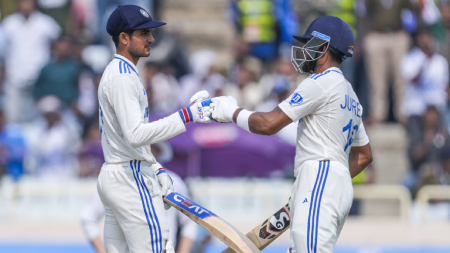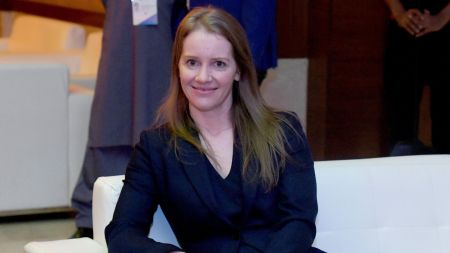Slippery take-off board: An issue Indian jumper Murali Sreeshankar had flagged; World Athletics says ‘extensive research’ is on
Following complaints from long jumpers about the take-off board causing them to slip, World Athletics said ‘extensive research’ is ongoing and they are talking to manufacturers and other key stakeholders.
Last week, Asian Games and Commonwealth Games silver medalist Murali Sreeshankar had said a more pressing issue World Athletics must address is the slithery take-off board that could cause injuries.

Sreeshankar was responding to a proposed plan of World Athletics to use a larger take-off zone instead of a take-off board to reduce fouls in long jump.
When asked about jumpers slipping on the take-off board, a World Athletics spokesperson in an email reply said: “Yes, World Athletics began doing extensive research into this issue following feedback from athletes and we are currently discussing our initial findings with take-off board manufacturers and other key stakeholders. This research is ongoing.”
Sreeshankar had cited examples of Jamaica’s Carey McLeod and compatriot Jeswin Aldrin losing their footing on the take-off board during last year’s World Championships in Budapest. France’s Jules Pommery, the third-placed finisher at the European Championships, had slipped ‘three-four times’ because of the board and injured his ankle, Sreeshankar had told The Indian Express.
“The issue is with the take-off board. Because of the material of the take-off board everyone was slipping. It was introduced after the 2021 Olympics (Tokyo) and everyone has been criticising it. It is definitely not wood. We wanted the material of the take-off board to be changed,” Sreeshankar said.
World Athletics said ‘the boards are primarily made of wood’, but didn’t give further details.
Sreeshankar also elaborated on why an athlete who commits a foul is prone to getting injured.
 “Sreeshankar is not taking part in the DL Final in Eugene to focus on the Asian Games. Taking part in the DL Final will involve a lot of travel, jet lag etc,” Sreeshankar’s father S Murali told PTI. (FILE)
“Sreeshankar is not taking part in the DL Final in Eugene to focus on the Asian Games. Taking part in the DL Final will involve a lot of travel, jet lag etc,” Sreeshankar’s father S Murali told PTI. (FILE)
“If we foul, we slip, if we are not fouling, part of the foot will be on the synthetic surface, so chances of slipping will be less, but if it is entirely on the take off board we are going to slip,” Sreeshankar explained the fraught take-off.
Earlier this month, World Athletics CEO Jon Ridgeon said that the purpose of the proposed take off zone was to reduce the time wasted because of jumpers overstepping.
“At the World Championships in Budapest last summer, a third of all the jumps were no-jumps, athletes stepping over the front of the take-off board,” Ridgeon said on the Anything But Footy podcast. “That doesn’t work, that’s a waste of time. So we’re testing, for example, a take-off zone rather than a take-off board, so we measure from where the athlete takes off to where they land in the pit. That means every single jump counts…” Ridgeon said.
The logic is that athletes will no longer have to worry about a foul as they won’t have to get as close as possible to the take-off line (foul line) at the end of the take-off board. Currently, a jump is measured from the end of the take-off board to the closest point of impact in the sand.
Carl Lewis, the former American great, and winner of the gold in four successive Olympics had criticised the take-off zone proposal. “…That would just eliminate the most difficult skill from the event. Just make the basket larger for free throws because so many people miss them.”
Sreeshankar said that if World Athletics introduced a take-off zone instead of a take-off board they would be questioning the skill of long jumpers. “It will affect the beauty of the sport. It is also questioning the skill of athletes. Long jump is a technical event and our aim is to be precise on the take-off board. The purpose of this intervention is to make the sport more interesting to viewers but it is affecting the novelty of the sport,” Sreeshankar had said.
On the proposed take-off zone, World Athletics said: “World Athletics is currently running tests with take-off zones in multiple locations and across several training groups. This testing will continue throughout the outdoor season. As iterated by our CEO, should this proposed innovation to the long jump not pass testing, it will not be officially introduced.”
Disclaimer: The copyright of this article belongs to the original author. Reposting this article is solely for the purpose of information dissemination and does not constitute any investment advice. If there is any infringement, please contact us immediately. We will make corrections or deletions as necessary. Thank you.





